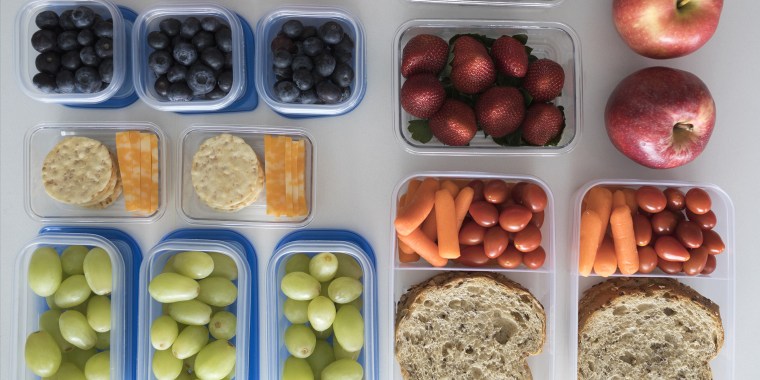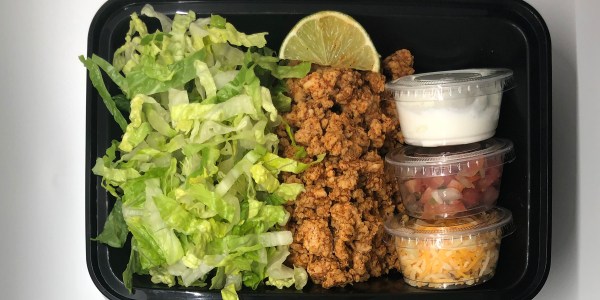Instagrammers make meal prep look like an art. They also make sky-high stacks of lunches stowed effortlessly in the fridge look like they'll last forever.
Unfortunately for the folks who have been pinning a recipe for grilled chicken lettuce wraps to eat Monday through Saturday, the whole seven-day thing is a bit of a ruse.
According to the United States Department of Agriculture (USDA), no one should be planning to keep pre-prepped meals around for longer than a handful of days. That is, unless they enjoy a forkful of spoilage bacteria along with that colorful, healthy fare.
All bacteria is not created equal
Meredith Carothers, a technical information specialist for the U.S. Food Safety and Inspection Service (a organization under the USDA), told TODAY Food bacteria that appears on leftovers isn't the same as the bacteria that causes foodborne illnesses. Unlike potentially life-threatening pathogens like E. coli, which can land someone a trip to the hospital, spoilage bacteria is the bacteria that causes food to go bad, which is indicated by a change in smell or appearance.
"It's not great to eat spoiled food. [The bacteria] will cause food to have an odor. Mold might start to grow. It could get a slimy texture. It’s unpleasant," Carothers said.
Spoilage organisms include yeast, fungi, mold or other bacteria that, while they can look totally unsightly, are unlikely to make you violently ill. However, Carothers said that many people will likely be nauseated by unsightly, moldy milk or sulphuric-smelling meats, so it's certainly not worth chancing it on something that might make you or your family gag.
Carothers added that prepped meals, despite their perfectly portioned, not-yet-eaten appearance, should still be considered as leftovers. As such, home cooks needs to abide by the food safety recommendations for leftover foods.
"After about four days is when that spoilage bacteria starts kicking in. Exactly how long it takes depends on other components — a citrus acidic sauce, for example, could preserve something longer," she said.
A colder fridge also slows the spoilage bacteria from growing. Unlike many bacterias that cause foodborne illnesses, the kind that causes food to rot still function in temperatures below 40 degrees.
However, a chilly 30-degree environment might give you an extra day or two to before the meal needs to be consumed.
Depending on what you're prepping, you may have a slighter longer storage window. Carothers advised consumers to remember the following guidelines, just in case a meal still looks and smells fresh at the four day mark.
Here's what to look out for
1. Meats, fish and poultry: When it comes to most animal proteins, pay attention to surface color changes, a dull hue or a funky smell. There may also be a texture change, especially a slimy coating on deli meats, chicken and fish.
2. Cooked and raw veggies: Make sure to feel their texture. The tips of vegetables like green beans or asparagus will sometimes take on a wilted look and feel mushy to the touch. Their odor, while less noticeable than bad meat, will also change slightly.
3. Grains and pasta: The starch category may have a little more "leniency" than something like cooked fish when it comes fridge shelf life, said Carothers. Because a lot of grains are cooked in water, there's a moisture component to watch out for that will result in the noodles or starch becoming soggy during the first stages of spoiling. Cooked pasta, however can last up to five days, while rice and quinoa may be good for up to six days.
4. Vegan proteins: Like animal protein, vegan proteins can also stink up the kitchen with unsavory odors. If a rotten, sulfur smell pours out of the Tupperware container of tofu tacos and beans, toss it.
The best meal-prepping advice?
While it might be tempting to try to cook for seven days at a time, you'll have a lower risk of your food spoiling if you plan two prep days a week. Because nobody wants to waste a pretty lunch — or eat a stinky one.



